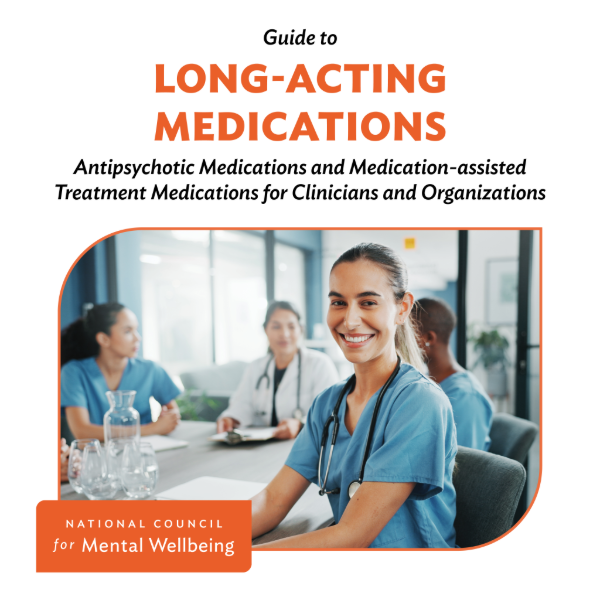The American Association of Psychiatric Pharmacists’ complimentary training program on LAIs provides information and guidance on appropriate patient selection, LAI preparation and administration techniques and insights into methods to engage a patient population with serious mental illness.
Learn MoreGuide to Long-acting Medications

A Call to Action for Clinicians and Treatment Organizations
This guide is a call to action for psychiatrists, clinicians, and mental health and substance use treatment organizations to increase the use of long-acting medications (LAMs) as a first-line treatment option.
Why LAMs?
Drawing upon clinical guidance from the American Association of Community Psychiatrists and research from the National Institute for Mental Health, this guide emphasizes the importance of LAMs in treating psychotic disorders, bipolar disorder, opioid use disorder (OUD) and alcohol use disorder (AUD). Key benefits include:
- Improved Medication Adherence: LAMs significantly reduce the rates of medication nonadherence and allow for earlier detection of nonadherence.
- Prevention of Relapse: Early and consistent use of LAMs can prevent relapses and improve overall treatment outcomes.
- Simplified Medication Regimen: LAMs reduce the burden of daily medication intake, making it easier for patients to adhere to their treatment plans.
- Enhanced Therapeutic Alliance: Regular administration of LAMs allows for more accurate assessments of dosing and treatment regularity.
Call to Action
The guide urges all community mental health and substance use treatment clinicians to provide LAMs as a first-line treatment option. It highlights the need for organizations to establish systems to educate staff, patients and families about the safe and effective use of LAMs. Additionally, it recommends implementing continuous quality improvement processes that lead to enhanced patient understanding and access to LAMs.
By adopting LAMs as a primary treatment strategy, clinicians can significantly improve patient outcomes and address the high rates of medication nonadherence, suicide and relapse associated with psychotic disorders, bipolar disorder, OUD and AUD.

